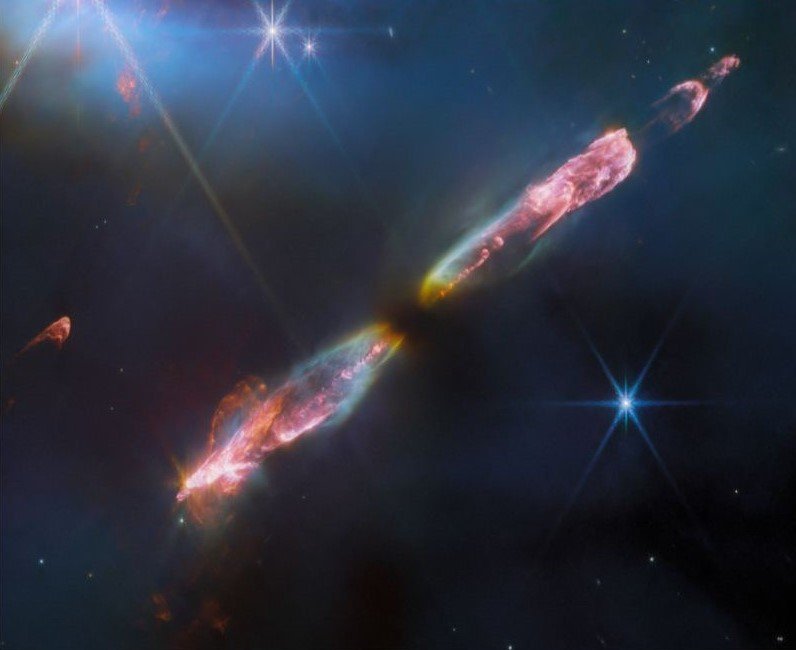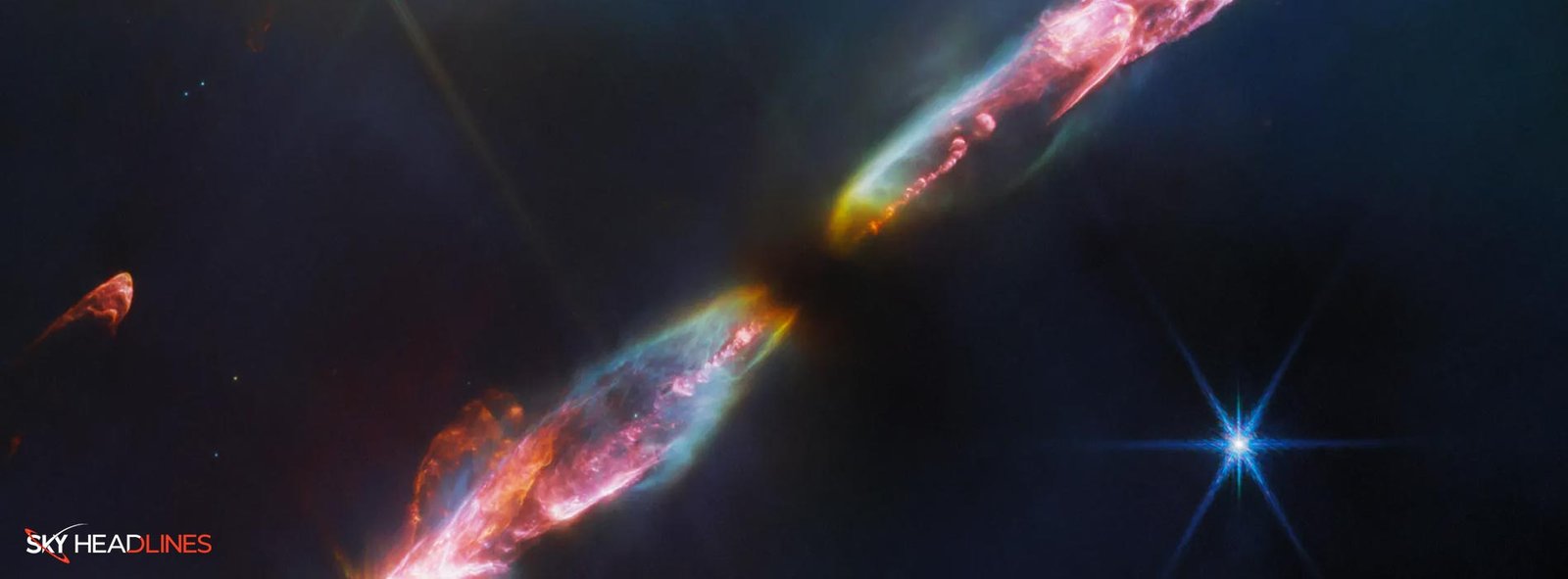A New Glimpse into Cosmic Phenomena
The James Webb Space Telescope (JWST) never fails to astonish with its detailed images of celestial bodies. One of its most recent captures showcases Herbig-Haro 211 (HH 211)—jets of star matter erupting from a young star at breakneck speeds.
Where Does HH 211 Reside?
Situated in the constellation Perseus, a home to numerous celestial phenomena including star clusters, nebulae, and galaxies, HH 211 finds itself in an energetic pocket of space. This area serves as fertile ground for the formation of young stars and other dynamic activities.
Proximity to Earth: A Telescope’s Reach
Though HH 211 is 1,000 light-years away from Earth, it’s relatively close in cosmic terms. This proximity enables powerful telescopes like the JWST to capture detailed observations, offering us clearer insights into this young star and its intriguing phenomena.
Environmental Conditions: A Hive of Activity
The region around HH 211 is rich with interstellar matter, such as clouds of gas and dust. These materials act as building blocks for young stars, making this particular space a hotspot for stellar birth and evolution—a genuine nursery for young stars.
The Role of the Protostar: A Cosmic Engine
The protostar at the heart of HH 211 plays a significant role in this active zone. This young star is currently accumulating mass by drawing in surrounding gas and dust. Concurrently, it is also ejecting material into space, creating a bipolar outflow. These dual processes contribute to making the area around HH 211 a dynamic hub in our celestial neighborhood.
Interstellar Interactions: Beyond the Jets
The jets of HH 211 are not isolated events. They engage vigorously with the interstellar medium, forming complex patterns and structures. These interactions offer astronomers valuable information about the conditions and processes shaping these young, energetic regions of space.

What JWST Reveals: Unveiling the Secrets of HH 211
State-of-the-Art Infrared Vision
The James Webb Space Telescope’s unprecedented infrared vision has changed the way we observe young stars and other celestial phenomena. Its ability to peer through thick clouds of gas and dust provides unique views of objects like HH 211.
A Vivid, Detailed Look
With its advanced infrared sensors, JWST has captured intricate details of HH 211’s jets as they interact with surrounding matter, all originating from the young star at the center of this activity. This clarity enables astronomers to study the jets’ movements and features, thereby giving us new insights into the behavior of young stars.
A New Understanding of Speed and Composition
The telescope’s Near Infrared Spectrograph (NIRSpec) has provided crucial data about the jets originating from this young star. These jets are slower and contain richer molecular content compared to jets from older stars, possibly because the shock waves around the young star aren’t yet powerful enough to disintegrate these molecules.
Beyond Visual Observations: Decoding Chemical Signatures
JWST also examines the chemical composition of the young star and its jets, offering a more comprehensive picture of their behavior and make-up.
A Dynamic Picture: Change Over Time
HH 211 is a rapidly evolving celestial object, primarily driven by the young star at its core. JWST’s capabilities ensure that we can monitor these changes, offering a real-time view into the dynamic behavior of young stars.
Understanding the Protostar: The Sun’s Younger Sibling
The protostar associated with HH 211 is in its infancy, with just 8% of the sun’s mass. This young star is anticipated to mature into a star similar to our sun, offering clues about our solar system’s early history.
Why HH 211 is Significant: An Ideal Subject for JWST
HH 211 presents a unique opportunity to study a young star in its earliest stages. Its relative proximity and youthful age make it an ideal candidate for JWST’s advanced observational capabilities.
A New Benchmark for Telescopic Capabilities
HH 211 serves as a testbed for JWST’s groundbreaking technologies, especially in observing young stars. Its features make it a prime subject for demonstrating how advanced technology can penetrate cosmic obscurity.
A Case Study in Bipolar Outflow
The bipolar outflows in HH 211, powered by the young star at its core, offer an excellent opportunity for detailed studies. This helps us understand the dynamic processes young stars go through as they evolve.
A Glimpse into Chemical Complexity
Data from the NIRSpec reveal that HH 211’s jets contain a complex mix of molecules. These findings contribute to our understanding of the young star’s chemical make-up and its surrounding environment.
A Dynamic, Ever-Changing Entity
HH 211, propelled by its young star, belongs to a category of celestial objects that undergo rapid changes. This offers astronomers a chance to observe stellar evolution almost in real-time.
Relevance to Our Solar System’s Past
Studying young stars like the one at the center of HH 211 could reveal what our solar system looked like during its formative years, enriching our understanding of our cosmic origins.
Scientific Discoveries: Insights into Young Star Behavior
NIRSpec data shows that jets from young stars like HH 211 differ significantly from those of older stars. This suggests that the young star’s weaker shock waves preserve more complex molecules in the jets.
The Ever-Changing Nature of HH 211: A Dynamic Entity
HH 211, influenced by its young star, evolves rapidly, changing its gas patterns within a few years. This dynamic behavior keeps astronomers continuously intrigued.
Unlocking Cosmic Mysteries
Observations from JWST provide invaluable insights into young stars and their environments, helping us unlock the universe’s secrets, one cosmic marvel at a time.





